What to Consider When Making Appointment Reminder Samples
Appointment reminders make sure patients remember the visit they added to their schedule weeks in advance. Let’s look at some tips to keep in mind when creating appointment reminder samples for your own practice.

People are prone to being forgetful; we all make mistakes.
But this statement is especially true when it comes to medical appointments. Even though these are important to our well-being, it’s not uncommon for people to forget. After all, patients need to schedule appointments 24 days in advance. It’s no surprise people forget by almost a month later.
Being forgetful isn’t always a big deal. Unless, of course, it affects whether or not you remember to go to the doctors, then it’s a problem.
A little over half of all patients forget about their appointments at some point or another. Unfortunately, this just leads to a loss of money for the practice and in wellness for the patient.
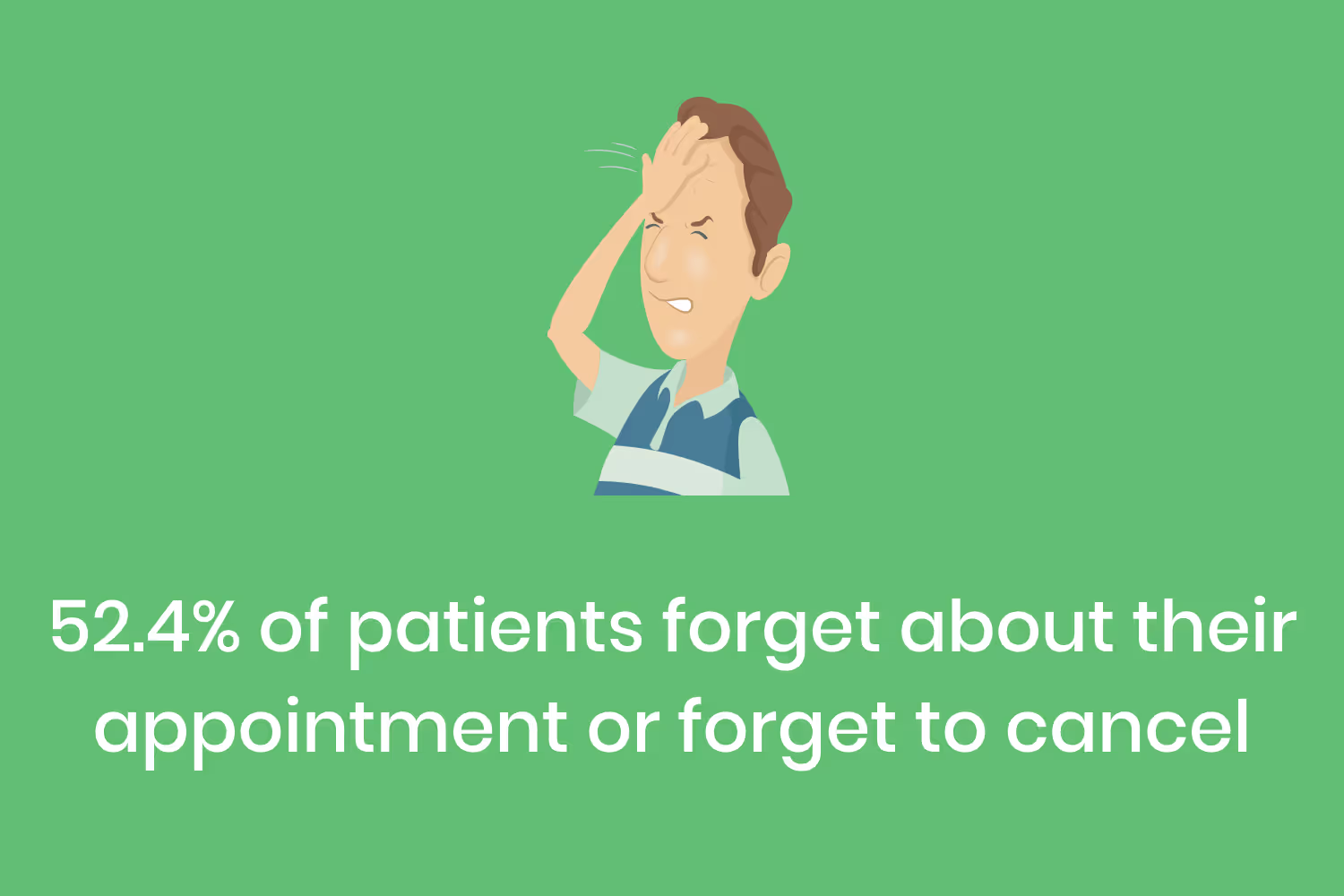
Patients miss out on valuable care, but also lose money depending on who they’re going to from cancellation and no-show policies. People might not think it’s fair to still receive a bill if they didn’t even come into the office. But skipping visits causes a financial loss for practices.
So how do practices prevent this from happening? Believe it or not, there’s a way to quickly reduce these costly no-shows and cancellations. It’s easier than you might think.
Appointment reminders make sure patients remember the visit they added to their schedule weeks in advance. That way they don’t forget to show up, or they at least cancel within a timely manner so your practice can fill that spot.
Now the question becomes, what’s the best way to remind my clients that they have an appointment upcoming?
Well, you’ll first need to decide which communication method you’ll use to remind them. Then there are endless possibilities for the messages you can send, each with important details you should include.
Let’s look at some tips to keep in mind when creating appointment reminder samples for your own practice.
Choose a Communication Method
The first thing you’ll need to determine for appointment reminder samples is what communication method to use.
There are several options you can use:
- Text message
- Phone call
- Snail Mail
Each of these has its benefits and when you’re choosing which to use, keep in mind your demographic. Each age group has a preferred communication method. You can use a combination of these to ensure they reach the patient, or you can ask the patient which method they prefer.
Let’s look at each of these options more in-depth.
Text Messages
This method is best for younger generations. Constantly on their phones, they’re unlikely to miss a text message.
In fact, 83% of millennials open SMS messages within 90 seconds of receiving them.
And there’s no spam folder either so they won’t get lost as easily. Just make sure to identify that the message is from you so they don’t delete it because they’re unsure who it’s from.
Patients have even said that they prefer text message reminders. Around 38% say that a text would have helped them remember their appointments.
Phone Calls
Phone calls are a hit-or-miss option. Most people are usually too busy to take a call, and young people don’t like answering the phone at all.
If they don’t recognize the number either, they’re even more unlikely to answer. Jive Communications found less than one percent of people never ignore a phone call.
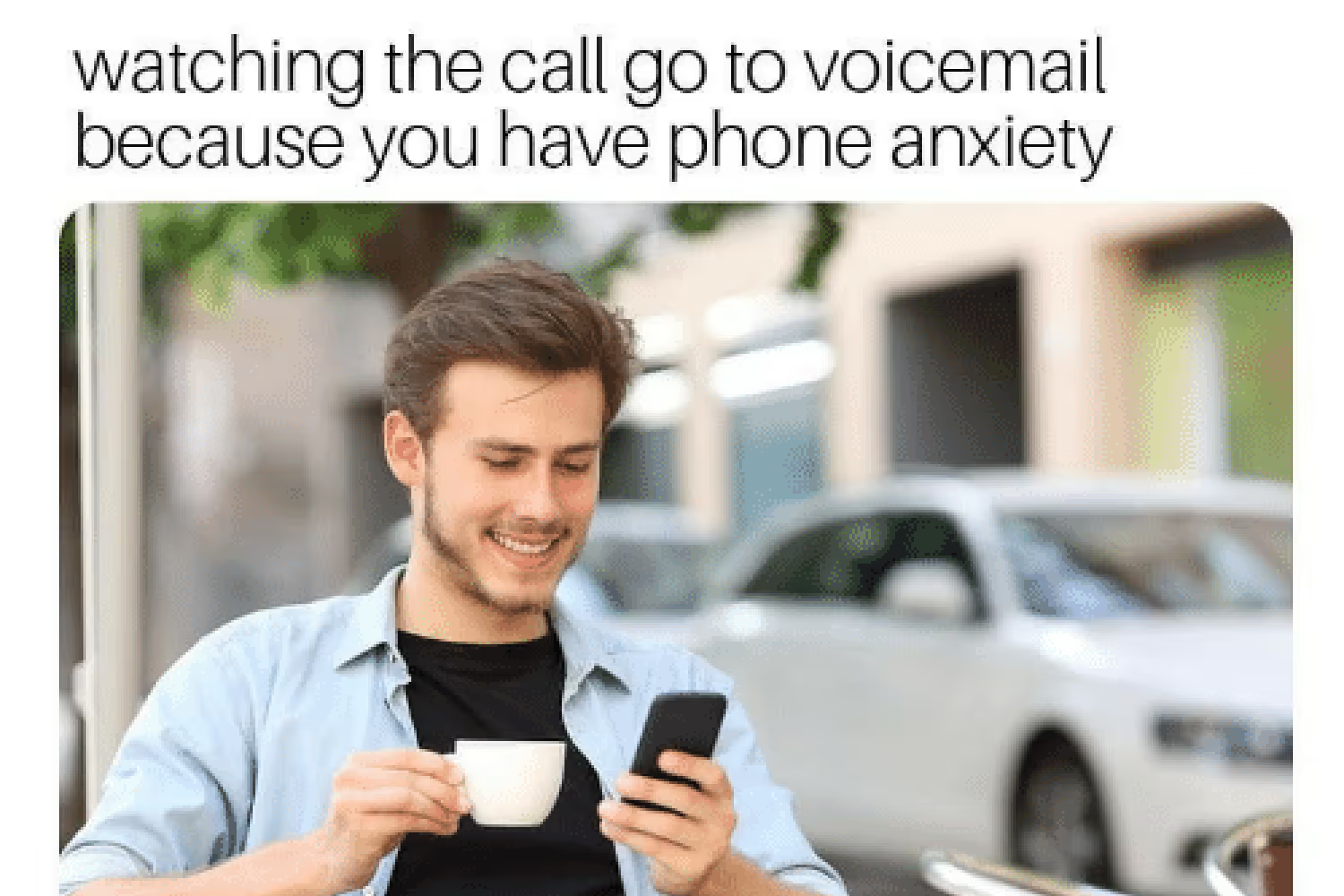
Because of this, the majority of appointment reminder phone calls rely on patients checking voicemails. If their inbox is full, you won’t even be able to leave a message.
Pre-recorded messages often have an option to press a button to confirm, so leaving a voicemail doesn’t do any good for that.
This seems like a safe bet for most demographics because almost every age group uses email.
But you have to consider the priority of email. Some messages could end up in spam folders, which is more likely than you might think. According to Statista, 53.49% of all emails classify as spam.
That statistic isn’t even including those that go through and get marked as unimportant, or get lost between a plethora of unread emails.
However, if patients prioritize emails and you know that for a fact, sending them in the form of an appointment reminder is an effective reminder method. Some of us check our inboxes as much as 20 times a day because our phones make them so accessible.
Snail Mail
If you choose to send a paper reminder via postal services, you need to heavily consider the time frame. Send a mailed reminder too far in advance could still mean patients will forget the closer it gets to their visit. But sending it too close to the appointment date might mean it gets there too late.
This also relies on the reminder not getting lost in the mail or delivered to the wrong address. After all, how often do we get a piece of mail sent to our address that was actually for someone else? It’s easy for them to get misplaced or thrown out too even if they do arrive.
There are a lot of factors with mailing services that could impact patients receiving their reminders. After all, 73% of American consumers say they prefer contact by organizations via direct mail because they choose when they want to read it. This is either a good thing or a bad thing depending on your clients.
In other words, you may want to use this in combination with another method, even if this is the method your patients prefer. That way in case anything gets lost or the patient moves, they’ll still receive another message.
Effective Reminders to Use as Samples
Once you choose which communication methods to use, you need to draft your message.
Even if we’ve never received a message, we can all guess what it absolutely must include: the date, time, and place of the appointment.
If we didn’t know these things, how would we possibly show up to our correct visit time?

While something this simple would suffice, it isn’t enough for patients to confirm, reschedule, or cancel a visit.
Making appointment reminders interactive will make patients more likely to show up, or cancel with enough time in advance.
They’re also more likely to remember if they have to do something to confirm their appointment. And it helps you know that they did receive the reminder. Let’s look at common call-to-action for each communication method I described earlier.
Automated text-messages prompt the receiver to do something. In some cases, they include links. Other times they will request specific responses to prompt a conversation since the messages usually get sent via a chatbot.
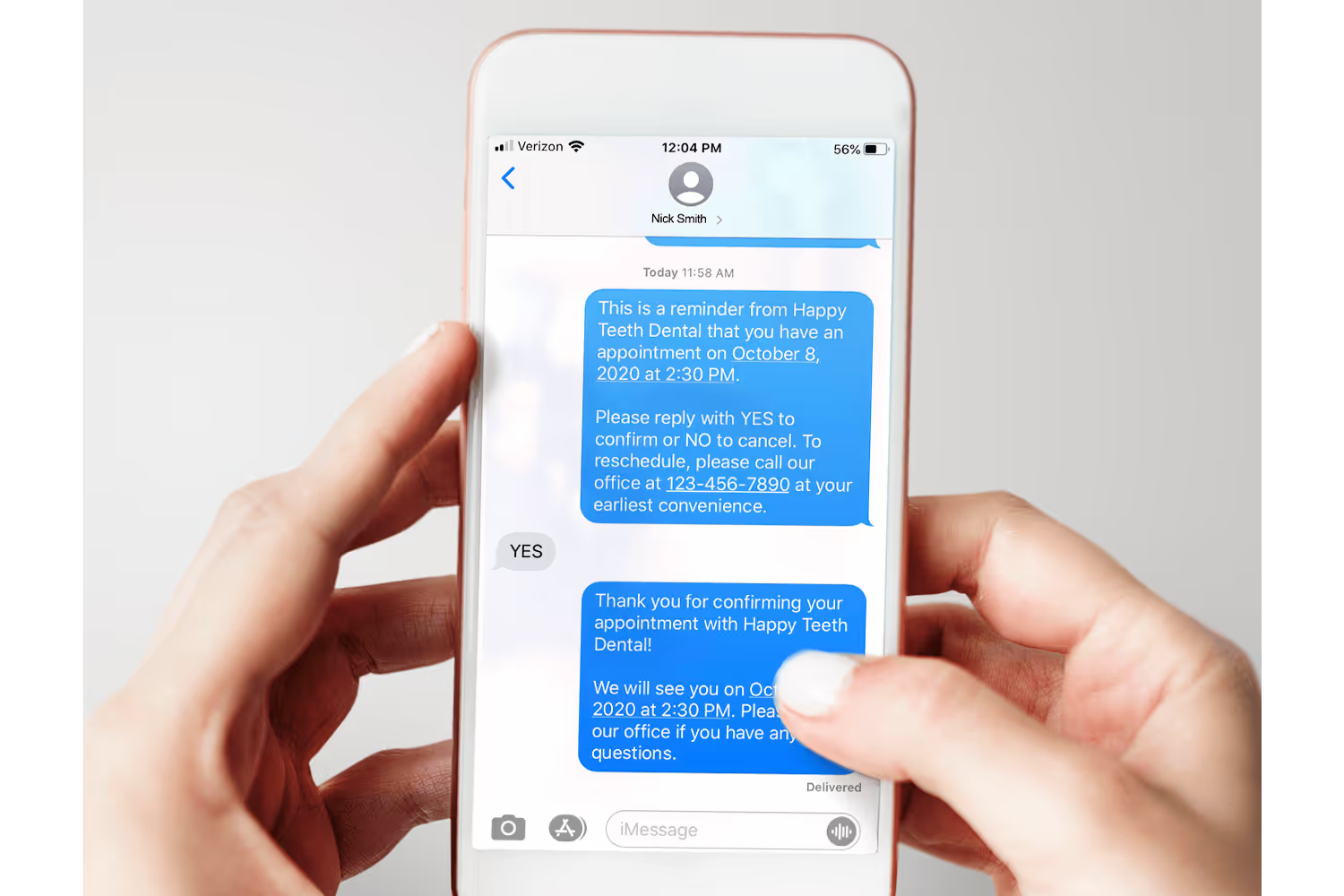
Here’s an example of what these would look like. Notice that this includes the practice’s office phone number. If a patient worries that the text was spam and felt uneasy responding, they could easily Google your phone number to confirm it is accurate. And if they’re still concerned it’s a scam message, they can call your office as you mentioned.
You’ll also notice that there aren’t links or special actions the receiver would need a smartphone to complete. This message would function from a cell phone that isn’t a smartphone.
But if the receiver does have a smartphone, they’re able to click on the date and time which becomes underlined once the message sends. Clicking on this gives the receiver several options. They can check their calendar to make sure they’re still available, or set another reminder so they don’t forget as it gets closer.
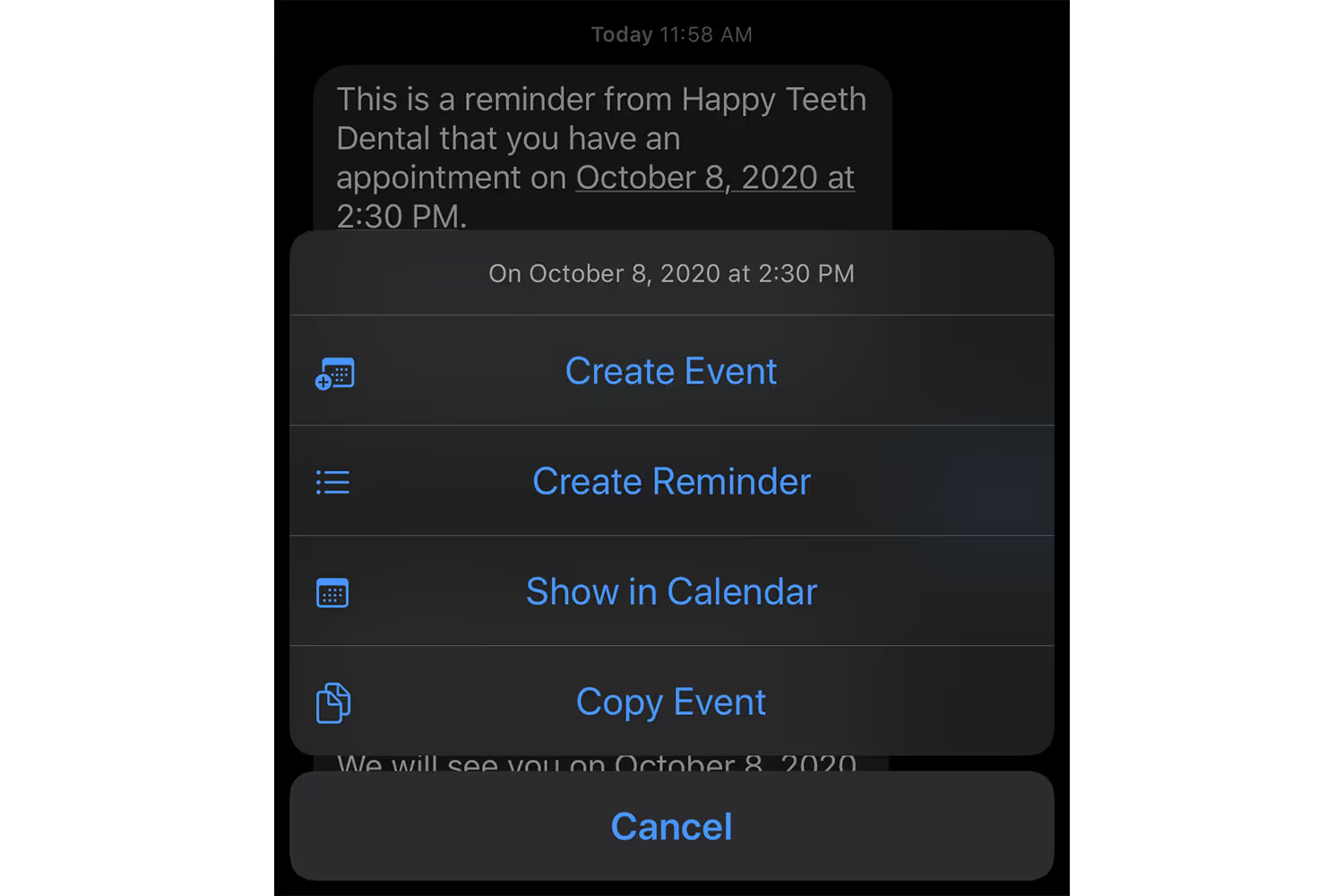
There are even apps your practice can use to create and send text reminders. Premade Samples make it easier for you to focus on other tasks, and apps keep all communication with patients right in one place.
When it comes to emailing, back-and-forth conversations don’t work quite the same as automated text message systems. The process isn’t as quick.
Instead, send them an email invitation to accept or decline their appointment. You can also link a calendar that has all open time slots in case they need to reschedule. This way the patient can check their options and find what fits their schedule before they call your office to change an appointment.
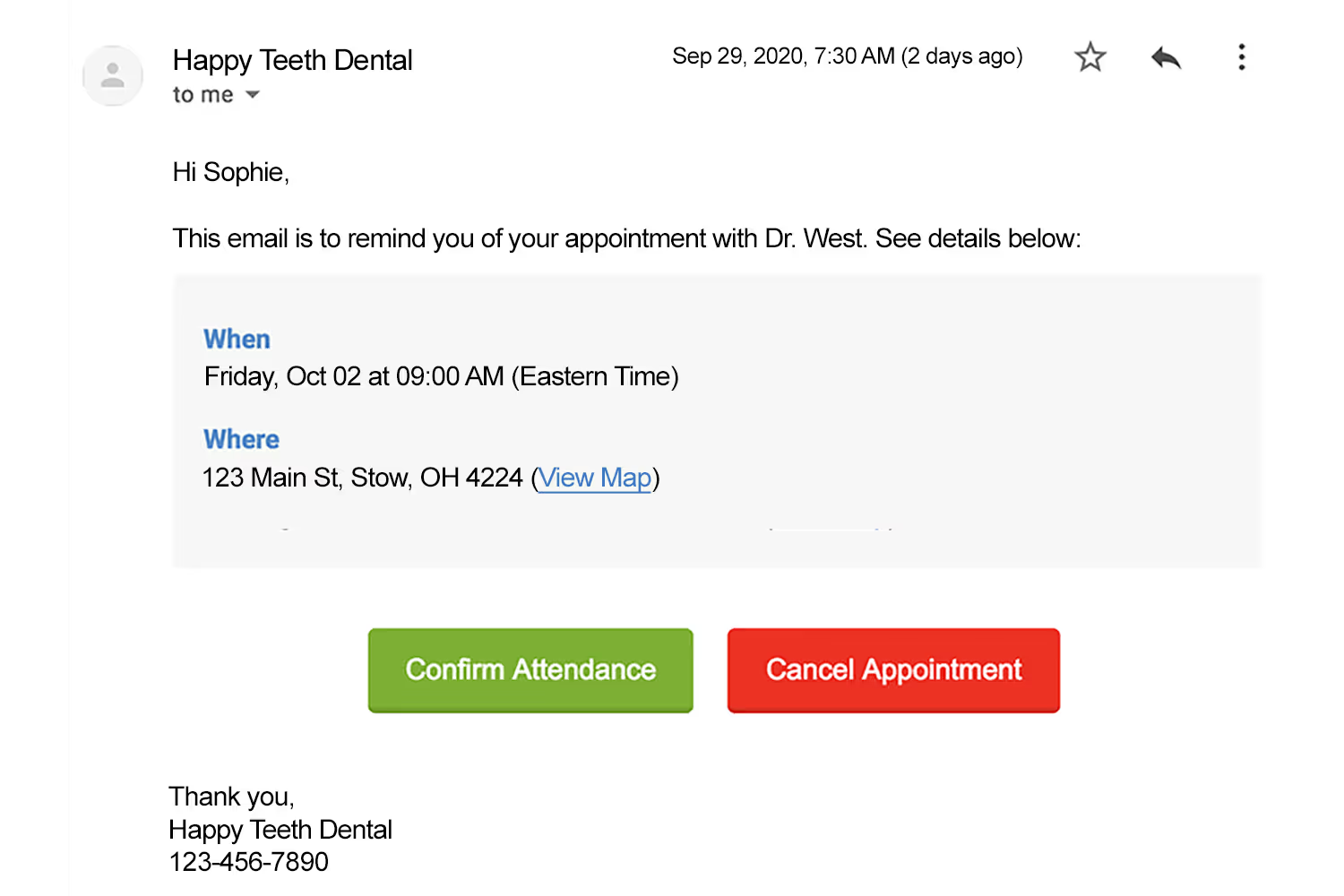
If you have a more advanced online scheduling platform, this is also a good time to send it to your patients. This simplifies the scheduling and rescheduling process for both your staff and your clients. They won’t need to call and have you run through all open time slots until they find one that works for them. Instead, they can just click the time they want and get it scheduled instantly.
Of course, phone calls can be interactive, too. If it’s a staff member that calls to remind the patient, they can handle confirming, canceling, or rescheduling right then. But it’s time-consuming to task an employee with calling all patients, especially if they don’t answer.
Using an automated messaging system can still be interactive. We’re so used to these kinds of pre-recorded phone calls; just think of the virtual receptionist saying “Press 1 for more options.” I’m sure we’ve all heard something similar to this at some point. If I had to guess, you probably just read that in the overly-positive but also robotic female voice.
While it isn’t as personal, it’s simple and effective. Like I mentioned before, these rely on getting through to a patient. But with the automated system, you can resend the call at another time until you receive some form of confirmation.
Even with a pre-recorded option, it’s still interactive. Provide a choice for patients such as press 1 to confirm or 2 to cancel. You could also give them a third option which then connects to a staff member if they have any questions or need to reschedule.
Now that we’ve gone over interactive messages for the first three communication methods, you might be wondering what to do with snail mail. It’s not like patients can just press a button on a piece of paper to confirm their visit, and there isn’t a way for you to know they received it.

Like I already mentioned, this is why you should combine multiple reminder methods. But even with your snail mail, there are some call-to-actions you can include. For example, provide your number and ask them to call you with any questions or if they need to change their appointment.
Helpful Information
An internal appointment reminder sample doesn’t need to just include the basics of when and where it is with a confirmation option.
You can make these more dynamic to include specific information depending on the type of appointment. While the first step is to get patients to show to their visit, the next is to get them to show up prepared.
Appointments can still get rescheduled or canceled even if the patient shows up. Depending on the kind of visit, there are instructions clients need to follow before arriving. If they don’t, it could impact the effectiveness of services causing them to have to reschedule.
Including these instructions in the reminders is necessary so that visits happen as planned. It would be an even bigger waste of time and resources if the patient took time to show up then still needed to cancel.
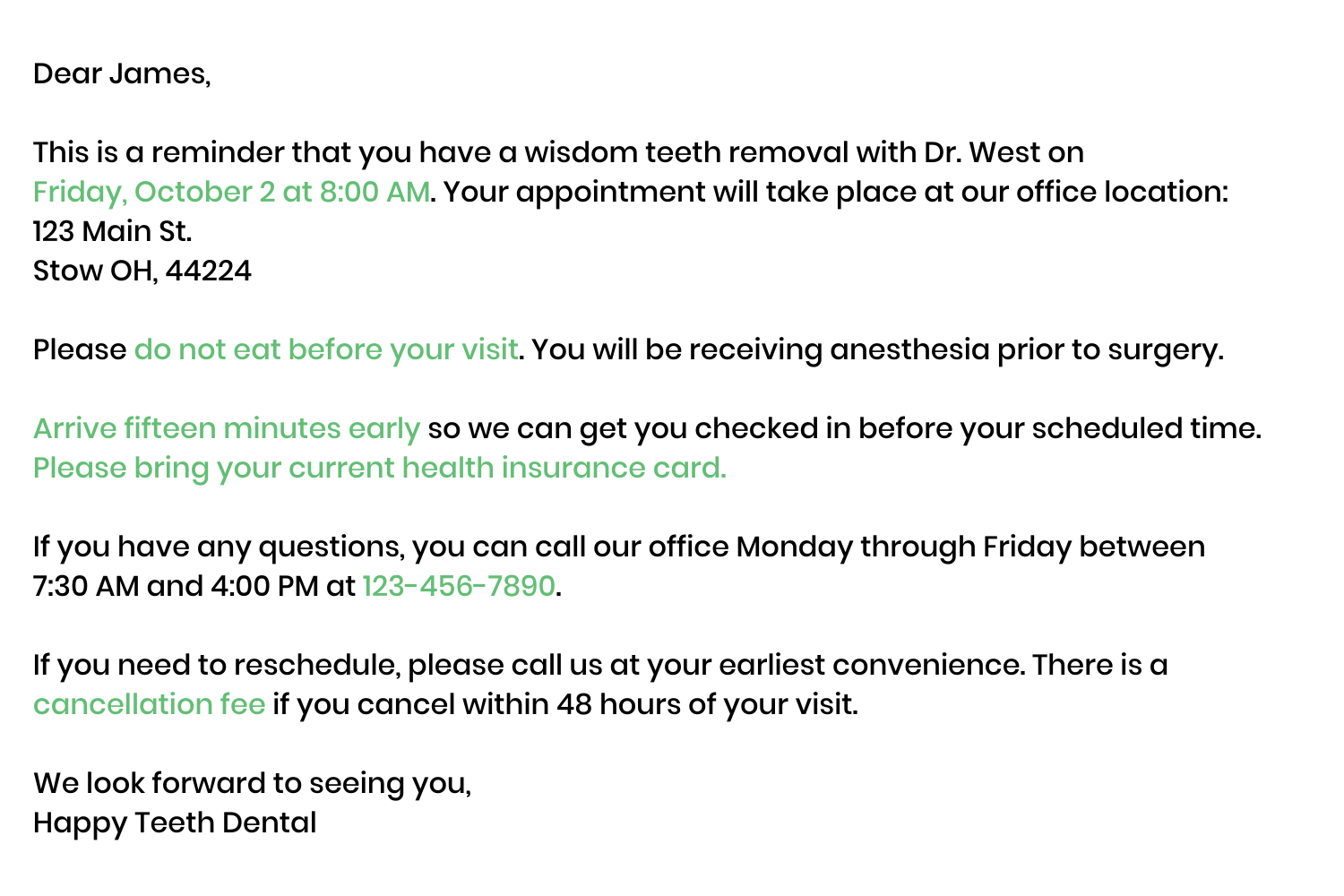
You can also add anything patients should bring, such as their insurance card or any medications. Also, let them know how early they should arrive. Not only does this save time if they need to fill out paperwork, but it also reiterates the time of their visit.
This is a place to mention if you have a cancellation or no-show policy in place. It’s frustrating enough having to miss a visit, but it’s worse if they have to pay when they didn’t even receive services.
If they know there’s a fee for a late cancellation or no-show, they’ll be more likely to show up or cancel in advance. This way, they don’t lose money and you have time to fill the open spot. Just make sure you send the reminder early enough so they receive it before your policy window kicks in.
Reminder Schedule
I keep mentioning to send appointments in advance but not too soon and to combine your communication methods.
Don’t just guess when to send these out.
Sending out too many messages can get annoying and make people feel bombarded, especially if they’re in a short time frame. Coming up with a consistent, well-planned schedule keeps everything organized so you don’t overwhelm patients.
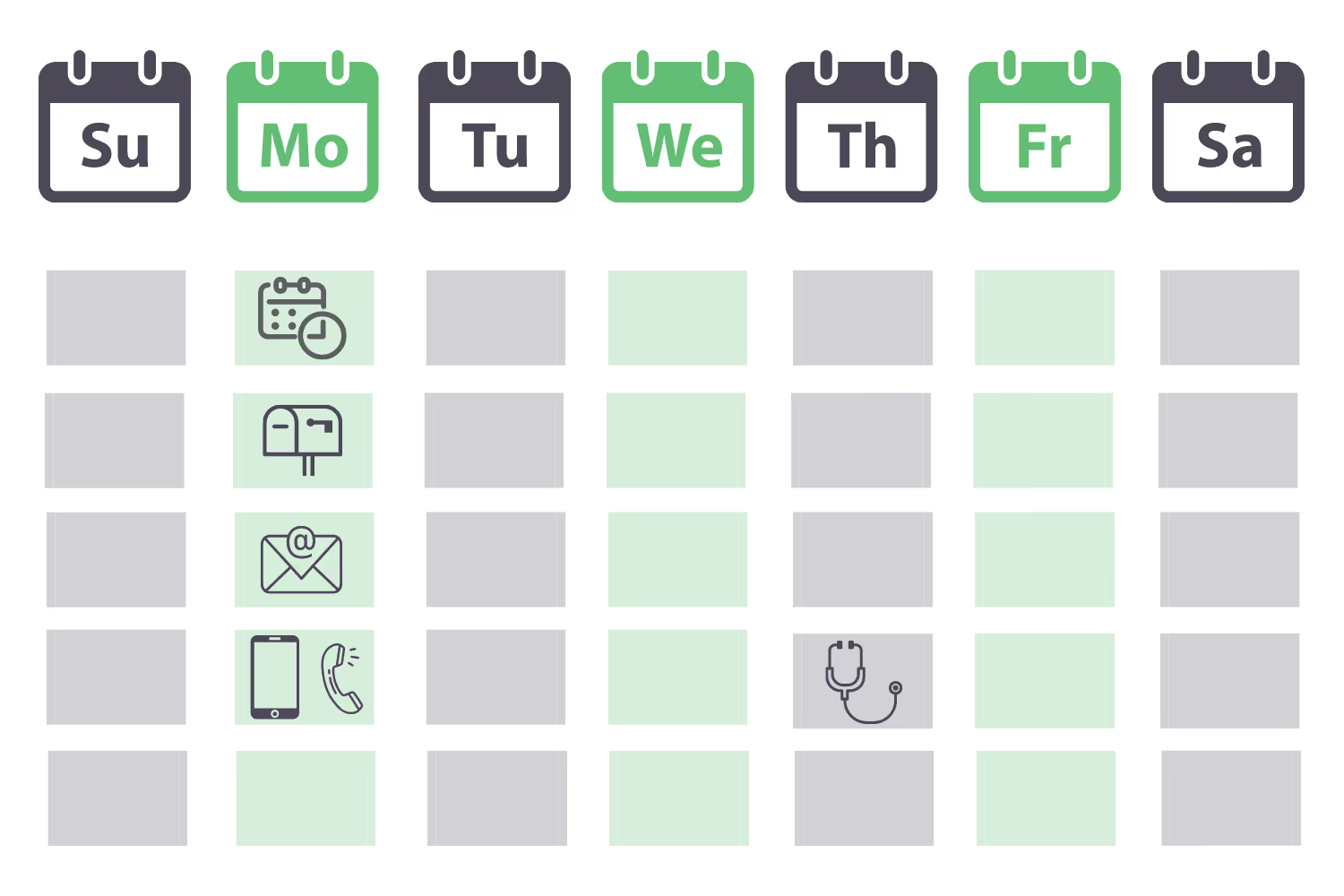
Sending a reminder early will prompt them to add it to their calendar. A second message will put it back on their radar so they don’t schedule something else, or in case they know they need to cancel. A third message a few days before will be the final confirmation and reiterate any final details they need to know.
Conclusion
It’s not uncommon to forget about our doctor visits. In fact, a majority of people do forget at some point.
While it doesn’t seem like a huge problem if this happens on occasion, it comes at a cost. Patients miss out on valuable care and still get charged for a no-show. And your practice will lose revenue from an empty time slot that you could have filled.
Sending an appointment reminder is a simple way to help patients keep the visit on their radar once it gets closer. Confirmations also let you as the practice know if the patient still plans to come in. Or if they cancel at the time you send the reminder, you can fill that spot with someone else.
When coming up with your appointment reminder samples, always consider who it’s for so you know which form of communication to use. Make sure to include any useful details regarding their visit. But make sure not to bombard them with too many messages. While you can combine the methods you use, create a schedule so the patient doesn’t get overwhelmed.
Emphasize your product's unique features or benefits to differentiate it from competitors
In nec dictum adipiscing pharetra enim etiam scelerisque dolor purus ipsum egestas cursus vulputate arcu egestas ut eu sed mollis consectetur mattis pharetra curabitur et maecenas in mattis fames consectetur ipsum quis risus mauris aliquam ornare nisl purus at ipsum nulla accumsan consectetur vestibulum suspendisse aliquam condimentum scelerisque lacinia pellentesque vestibulum condimentum turpis ligula pharetra dictum sapien facilisis sapien at sagittis et cursus congue.
- Pharetra curabitur et maecenas in mattis fames consectetur ipsum quis risus.
- Justo urna nisi auctor consequat consectetur dolor lectus blandit.
- Eget egestas volutpat lacinia vestibulum vitae mattis hendrerit.
- Ornare elit odio tellus orci bibendum dictum id sem congue enim amet diam.
Incorporate statistics or specific numbers to highlight the effectiveness or popularity of your offering
Convallis pellentesque ullamcorper sapien sed tristique fermentum proin amet quam tincidunt feugiat vitae neque quisque odio ut pellentesque ac mauris eget lectus. Pretium arcu turpis lacus sapien sit at eu sapien duis magna nunc nibh nam non ut nibh ultrices ultrices elementum egestas enim nisl sed cursus pellentesque sit dignissim enim euismod sit et convallis sed pelis viverra quam at nisl sit pharetra enim nisl nec vestibulum posuere in volutpat sed blandit neque risus.

Use time-sensitive language to encourage immediate action, such as "Limited Time Offer
Feugiat vitae neque quisque odio ut pellentesque ac mauris eget lectus. Pretium arcu turpis lacus sapien sit at eu sapien duis magna nunc nibh nam non ut nibh ultrices ultrices elementum egestas enim nisl sed cursus pellentesque sit dignissim enim euismod sit et convallis sed pelis viverra quam at nisl sit pharetra enim nisl nec vestibulum posuere in volutpat sed blandit neque risus.
- Pharetra curabitur et maecenas in mattis fames consectetur ipsum quis risus.
- Justo urna nisi auctor consequat consectetur dolor lectus blandit.
- Eget egestas volutpat lacinia vestibulum vitae mattis hendrerit.
- Ornare elit odio tellus orci bibendum dictum id sem congue enim amet diam.
Address customer pain points directly by showing how your product solves their problems
Feugiat vitae neque quisque odio ut pellentesque ac mauris eget lectus. Pretium arcu turpis lacus sapien sit at eu sapien duis magna nunc nibh nam non ut nibh ultrices ultrices elementum egestas enim nisl sed cursus pellentesque sit dignissim enim euismod sit et convallis sed pelis viverra quam at nisl sit pharetra enim nisl nec vestibulum posuere in volutpat sed blandit neque risus.
Vel etiam vel amet aenean eget in habitasse nunc duis tellus sem turpis risus aliquam ac volutpat tellus eu faucibus ullamcorper.
Tailor titles to your ideal customer segment using phrases like "Designed for Busy Professionals
Sed pretium id nibh id sit felis vitae volutpat volutpat adipiscing at sodales neque lectus mi phasellus commodo at elit suspendisse ornare faucibus lectus purus viverra in nec aliquet commodo et sed sed nisi tempor mi pellentesque arcu viverra pretium duis enim vulputate dignissim etiam ultrices vitae neque urna proin nibh diam turpis augue lacus.



![[ANSWERED] What is a Long-Term Care (LTC) Pharmacy](https://cdn.prod.website-files.com/67e2b8210878abcba6f91ae6/68d687806a075a1cf64659b0_WhatisLongTermCarePharmacy_925.avif)
